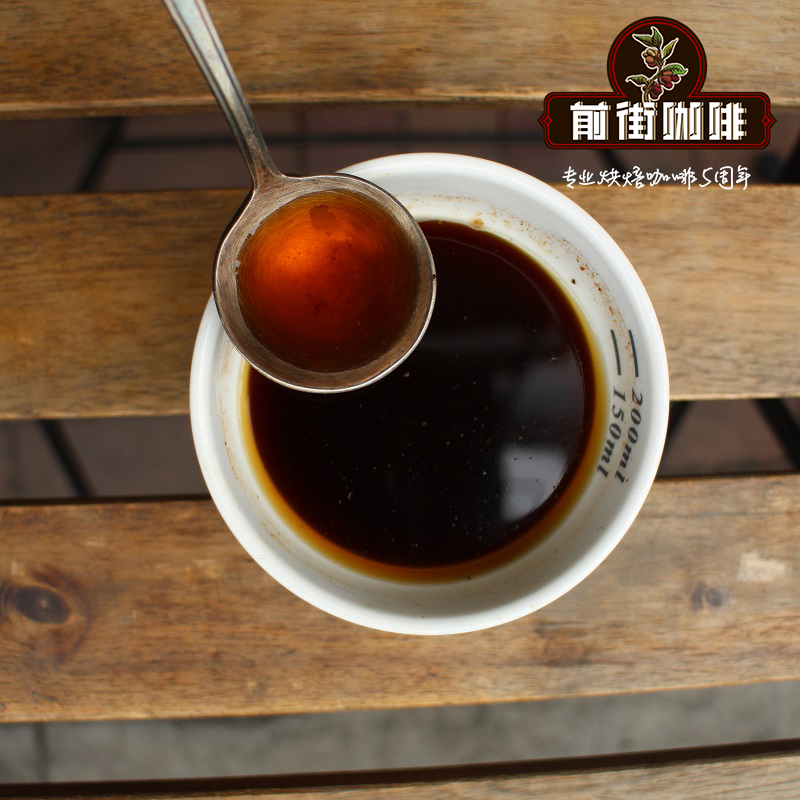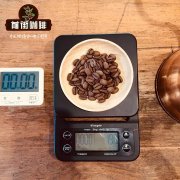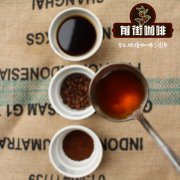The handling and grading system of raw coffee beans? How many kinds of raw beans are classified? How about coffee and raw beans?

Professional coffee knowledge exchange more coffee bean information please follow the coffee workshop (Wechat official account cafe_style)
The handling and grading system of raw coffee beans? How many kinds of raw beans are classified? How to store raw coffee beans?
When coffee beans are harvested and treated layer by layer, they are properly dried.
Keep the sheepskin in storage for about 2 murmurs for 4 months, and obtain fresh batches in that season.
For the second time, coffee beans are crops, understand the specific water content.
Generally speaking, the grading of coffee beans will be stipulated according to the requirements of each country.
In order to achieve the economic value of coffee beans, here are a few points
Distinguish:
📍 ranks coffee beans by the size of their bodies:
The bean sieve is based on the particle size to distinguish the number of eyes layer by layer.
When baking, the heating conditions are the same, and the flavor is relatively simple.
📍 is classified by the altitude of the soil in the planting environment:
High altitude is the most commonly used grading standard in Central American coffee producing areas.
The altitude of the producing area is about 1200 m above sea level, and raw beans will be marked with SHB and SHG.
The higher the level, the richer the taste of coffee beans.
📍 's criteria for subdividing grades in a dizzying proportion of defects:
If there are more defective beans, if they are baked together, they will have flavor, aroma and texture.
Will have a significant impact, of course, there will be concerns about the health level.
📍 in terms of yield, micro-batch, refinement of treatment, difficulty and screening
Specific stringent requirements:
For example, I often hear the grading requirements of Kenya AA and Clinique for the purpose of understanding.
Make sure to distinguish good coffee beans, such as L7, L12, L21, L39, L95, L195.
📌 L means Level, and the requirements of subdivision are based on the quantity of production,
The precision, difficulty and screening rigor of the process.
The higher the 📌 number, the less the output, the more refined the processing, and the more difficult it is.
And the flavor is excellent, which is highly appreciated by the foodies.
In general, import and export do raw bean business, rarely buy and sell raw beans with shells, probably have to shell and grade raw beans before shipping to the buyer. Because the import of raw beans with shells, the risk is particularly high. First of all, the buyer is unable to determine the quality of the raw beans bought, because the raw beans are in the hard shell and cannot accurately observe their condition. Although it can be analyzed by sampling, the quality of the raw beans bought can not be fully guaranteed. There is a high risk of being mixed with low-grade coffee beans. Because you can't see how many low-grade raw beans have been mixed in. Secondly, people who import raw beans with shells also need to shell and classify themselves, so they must increase the equipment cost of shelling machines and classifiers. Finally, imported raw beans with shells often have the possibility of bad intentions. In order to mix fish eyes with pearls, these raw beans with shells are sold to merchants to deceive consumers. Let consumers see the raw beans with shells they put in the store, thinking that they really have a kind of Taiwanese coffee and have a good harvest, enough to make three-in-one or two-in-one Taiwan coffee for sale. At present, many coffee operators in Taiwan deceive consumers in this way.
One difficulty in grading is that it is impossible to distinguish between special and characteristic coffee beans. Although this disadvantage is not very serious, it makes it impossible to give full play to the potential of coffee beans. We can identify the handling of coffee beans by the appearance of raw beans. Although the test cup can find out the problems of beans, the appearance of raw beans can predict their quality, and the appearance of raw beans roughly reflects the quality of raw beans. Appearance, including raw bean color, raw bean water content, silver skin adhesion, defects, mildew and so on, all reflect the quality of raw beans.
The trading of raw coffee beans must have a clear understanding of the origin information of raw beans, and it is best to understand the management and processing of local coffee plantations.
1. Raw beans must have the same shape and color, with the same shape and color, etc., and the size of the raw beans must be 17amp 18,15pm 16,13max 14 etc. The reason is to make the appearance and taste consistent after baking. The quality of small beans is more unstable than that of big beans after being baked in different batches. The inconsistent color shows the absence of the drying stage, while the inconsistent shape implies a mixture of different varieties of beans. This point indicates the consistency of raw bean classification, the general classification may only rule out defective beans and sundries, and the rest are qualified beans. The finer classification is classified according to the size of the mesh, so that the size of raw beans at all levels are the same. But. The smaller the share, the higher the price.
two。 It is confirmed that the producers are harvested and treated separately by different producing areas and varieties, and the test cups are completed respectively before being mixed in the storage tank.
3. The washed Arabica coffee beans are more consistent and brighter in color. It will not be like the inconsistent or dark color caused by improper treatment and drying. If the raw bean looks dull, the juice quality will also be dull and tasteless.
4. To investigate the drying conditions of coffee farms. A lot of time must be invested to make sure that they are drying in accordance with the climate, all of which can be shown in a cup of coffee. Inappropriate drying, whether in a bean drying farm or in a dryer, can be seen from the outside. Rapid drying in a dryer will produce dark brown coffee beans. If you spread it too thin in the bean drying farm and don't stir it often, the drying speed will be too fast and the beans will be spotted (or easy to peel when baked). Some people suggest that the coffee beans should be laid in the bean drying farm, the shell should be dried first, then moved into the dryer to continue drying, and finally removed and moved to the bean drying farm to complete the drying. They believe that doing so will improve the color. Some people put the coffee beans into the dryer several times in the whole drying process, so that the coffee beans remain in the drying tank, and the water distribution inside the beans will be more uniform. This practice makes the moisture on the outside dry faster than that on the inside. Pay attention to the temperature of the dryer. If the temperature exceeds 42 ℃, it will cause a dark color and taste scorched.
5. The processing process will affect the quality of coffee. Make sure they process the coffee fruit as soon as it is harvested. In other words, a good cup of coffee lies in the immediate processing steps after picking the fruit. Ask the farmer how many fermentation tanks have been used and why? During the fermentation stage, do you really fish out the coffee that floats on the water? Is there any screening after removing the exocarp and before putting it into the fermentation tank? Only coffee farms that spend enough time fermenting can improve the quality of coffee. This is an important and necessary step. If in the process of treatment, the exocarp of coffee remains in the fermentation tank, it will result in brown raw beans. Harvesting overripe coffee fruits can also cause this kind of raw beans.
6. Natural (sun) treatment usually browns the silver skin on the outside of beans. It is called fox beans in Brazil and is not considered a defect. Novice graders may list the beans as missing beans, but if part of the silver skin is worn off with a sorting machine, it is not considered a disadvantage. Raw beans generally have silver skins attached to the surface, which are difficult to grind off easily. For washed coffee beans, fox beans can taste sour, fruity, or Rio tastes. This will only be shown in the coffee cup, the appearance can not be seen.
7. Does the bean have a pink silver skin on the outside, or is it cracked inside? This is a serious defect ignored by most people. Since the beans are not listed in the classification, the buyer usually buys them as a distinctive grade. You'd better throw these beans away right away, because it will ruin a good cup of coffee.
8. Are the edges of the coffee beans white or faded? This is caused by moisture when dry or stored. This kind of beans will form a light and boring cup of coffee. If the drying is uneven, this kind of white spot is easy to see. The white spot part of the bean has a higher water content than other parts. White spots or discolored coffee beans are due to contact with the ground, or due to moisture, oxidation.
Raw bean
All you can see on the market are cooked beans that have been roasted. If you want to see raw beans, you may have to go to the coffee producing area or the coffee roaster to see them. But where did the raw beans come from? Now we will introduce the raw beans one by one.
Harvest
The red fruit harvested from the coffee tree is like the cherry class. We call it the coffee cherry. As the mass production of coffee has been harvested by machines in some countries, machine harvesting is only suitable for planting on flatter and large areas of terrain, and many rugged terrain planted in high mountains can rely on manual harvesting.
The method of manual harvest
Hand picking-only the ripe red coffee cherries are picked manually, and the immature green fruits are retained and harvested in stages after ripening.
Rub branches-use the middle finger and index finger or thumb and index finger to pick the whole bunch of coffee fruit from the branch to the end of the branch. of course, the coffee fruit will be interspersed with ripe and immature fruit. The method of hand-rubbing branches will generally choose the coffee fruit to be harvested when the maturity is most concentrated.
Shake the tree-using the principle that the ripe fruit falls naturally, beat the branches to make the ripe coffee cherries fall, and then collect them from the ground, or place the plastic cloth under the coffee tree in advance for concentration.
Machine harvester
The harvester is used only on a large-scale manor. The mechanical principle of the harvester is similar to the method of rubbing branches. It uses dense steel bars to sweep the branches to make the coffee beans fall. Of course, the harvested ones include mature fruits, immature fruits, leaves and twigs, and then use ancient fans to filter out lighter impurities such as leaves, twigs, shell fruits, sundries, and so on.
Making beans
Coffee fruits with concentrated harvests must go through different procedures, such as washing, drying, peeling, fermentation, shelling, screening, polishing, and so on, before they can become what we call raw beans. At present, the methods of making beans vary according to local weather factors and techniques. But it can be roughly divided into the following two bean-making methods:
Dry bean making method (also known as: natural method, solarization method, traditional method, ancient method, dry or non-washing method)
The dry bean-making method is to dry the harvested coffee fruit directly, usually by exposing the harvested coffee fruit to the square for about a week when the weather is good, and it may take two or three weeks when the weather is bad, and machine drying is directly used in some areas. The dried coffee fruit shows a deep color, at this time the outer skin is crisp and easy to take off, and then use a sheller to remove the outer and inner shell.
Wet bean production (also known as water washing)
In some areas with poor and rainy weather, in order to deal with the huge harvested coffee fruits and improve the efficiency and stable quality of beans, the bean-making methods developed around the middle of the 18th century, in order to be able to control each processing process of beans, there must be a continuous equipment, so washing beans are generally large-scale bean farms. The biggest difference between wet beans and dry beans is that fresh coffee fruits are peeled with a peeling machine, washed with water and filtered.
Grading
Due to the mass production of coffee, the delicate indicator is the distinction of grades. Just like the fruit, the larger and more mature fruit produced by the same tree will be sweeter and sweeter than the smaller and less ripe one. Experiments have also confirmed that the coffee produced in the same area is more full and bigger than the coffee that is not full and small. The flavor and texture is stronger, but it is not that the bigger the beans are, the better the flavor and texture is. It is also like the overripe fruit that loses its delicacy.
Important Notice :
前街咖啡 FrontStreet Coffee has moved to new addredd:
FrontStreet Coffee Address: 315,Donghua East Road,GuangZhou
Tel:020 38364473
- Prev

Introduction of Ruoxia Village Coffee Brand _ existing Coffee varieties in Ruoxia Village _ how to identify Rose Xia Village Coffee beans
Professional coffee knowledge exchange more coffee bean information Please follow the coffee workshop (Wechat official account cafe_style) in order to accomplish the mission of growing the best coffee in the world, Rose Xia Village is strictly controlled from the seed selection process. They sent coffee seeds collected from the Gori Gesha forest 20 kilometers away from Rosa Village Manor to professional institutions for genetic testing.
- Next

What are the common ways to handle raw coffee beans? What is the difference between solarization and washing? Coffee-producing country
Professional coffee knowledge exchange more information about coffee beans Please follow the common handling methods of raw coffee beans in the coffee workshop (Wechat official account cafe_style). What is the difference between solarization and washing? What is the grading system of raw beans in large coffee-producing countries? 1. Grading: after the seeds are taken out, the seeds are screened and graded, and Guatemala, Costa Rica and other countries are rated according to the planting height.
Related
- Detailed explanation of Jadeite planting Land in Panamanian Jadeite Manor introduction to the grading system of Jadeite competitive bidding, Red bid, Green bid and Rose Summer
- Story of Coffee planting in Brenka region of Costa Rica Stonehenge Manor anaerobic heavy honey treatment of flavor mouth
- What's on the barrel of Blue Mountain Coffee beans?
- Can American coffee also pull flowers? How to use hot American style to pull out a good-looking pattern?
- Can you make a cold extract with coffee beans? What is the right proportion for cold-extracted coffee formula?
- Indonesian PWN Gold Mandrine Coffee Origin Features Flavor How to Chong? Mandolin coffee is American.
- A brief introduction to the flavor characteristics of Brazilian yellow bourbon coffee beans
- What is the effect of different water quality on the flavor of cold-extracted coffee? What kind of water is best for brewing coffee?
- Why do you think of Rose Summer whenever you mention Panamanian coffee?
- Introduction to the characteristics of authentic blue mountain coffee bean producing areas? What is the CIB Coffee Authority in Jamaica?

